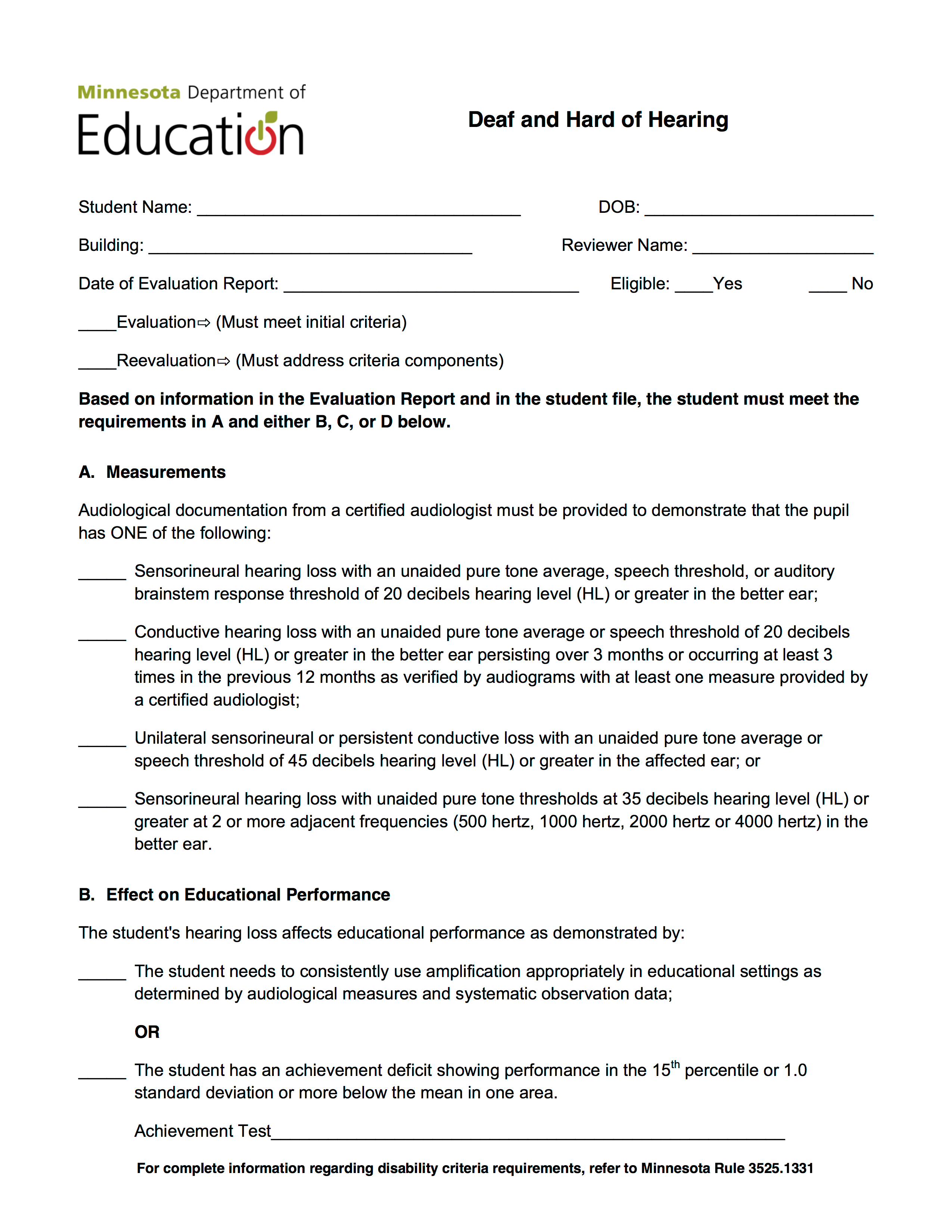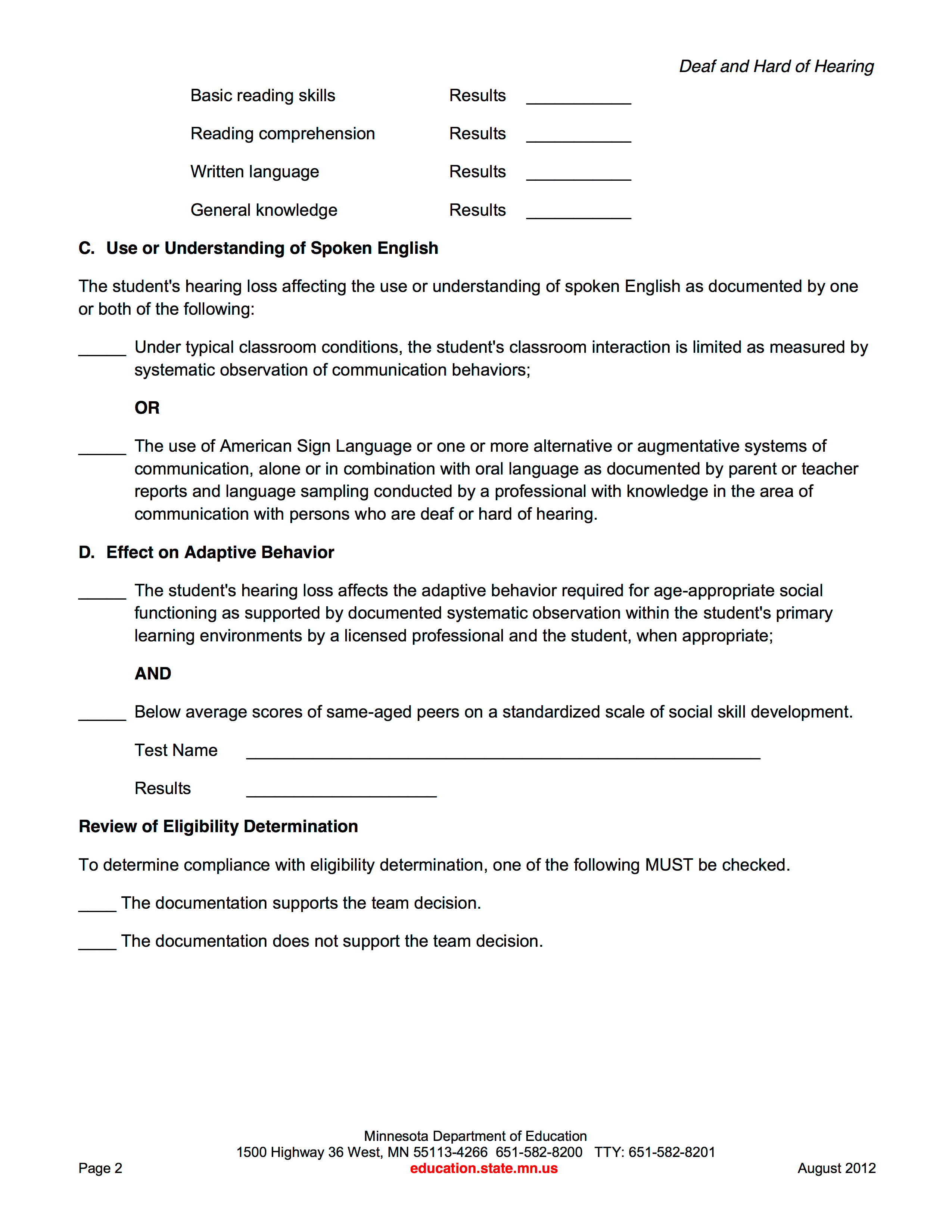
Deafness
Disability Label & Prevalence |
Definition |
General Characteristics |
Identification & Assessment |
Educational Approaches |
Educational Placement Alternatives |
Deafness 2 to 3 out of every 1,000 children are born deaf or hard of hearing. |
IDEA – Hearing loss so severe that the child is impaired in processing linguistic information through hearing, with or without amplification, [and] that adversely affects a child’s educational performance. |
Issues with English literacy, speaking, academic achievement, and social functioning. |
Assessment of Infants, Pure-Tone Audiometry, |
Oral/Aural Approaches: auditory learning, speechreading, cued speech; Total Communication: manually coded English, fingerspelling; American Sign Language |
General Education Resource Rooms Separate Classrooms Special Day School |
Description of 2 evidence-based strategies |
Oralism: Emphasizes the development of speech, speechreading, and listening with appropriate amplification. Sign language is not used with this approach. |
Practitioner Based Article related to this area: Include reference and summary of the article. |
The development of language and the ability to communicate lies at the heart of a child’s development. Deafness, and often society’s lack of understanding of the needs of deaf children and young people, can present a barrier to their social, emotional and intellectual development, preventing them from achieving their full potential. The language and communication barriers faced by deaf children manifest themselves in increased risk. Deaf children are more likely to experience isolation, bullying, child abuse, underachieve educationally, live in low income families, and become unemployed (National Deaf Children’s Society (NDCS), 2011). |
MN Eligibility Checklist

